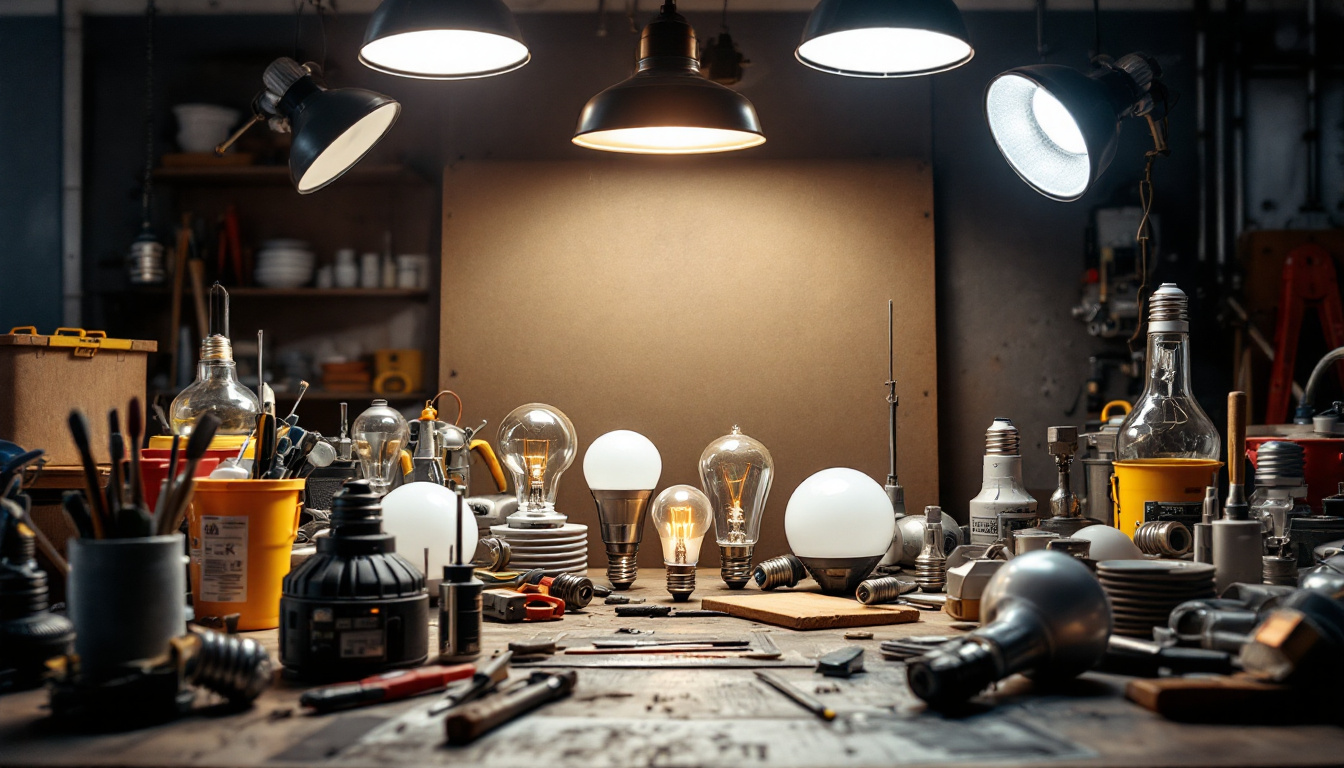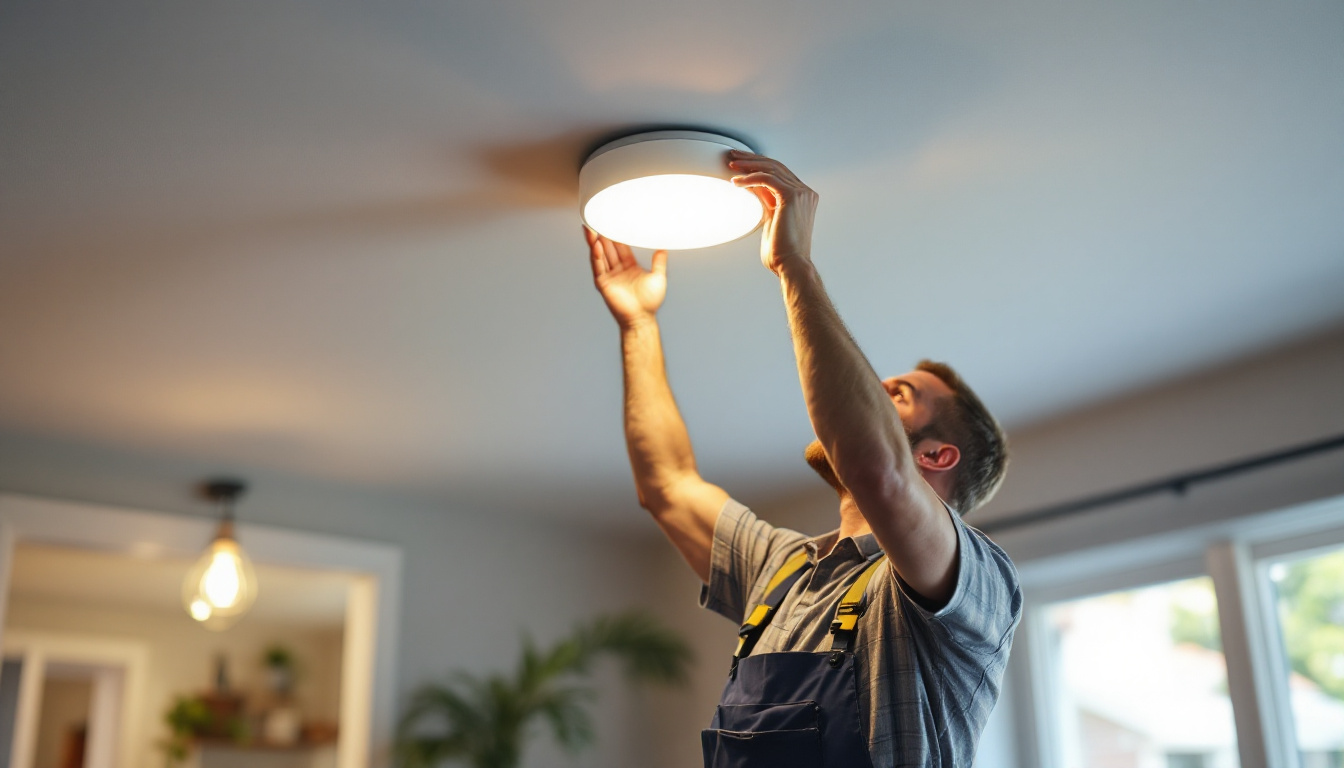
In the world of commercial and industrial lighting, metal halide bulbs have established themselves as a popular choice due to their bright, white light and efficiency. This handbook serves as a comprehensive guide for lighting contractors, providing insights into the features, benefits, applications, and considerations associated with metal halide bulbs.
Metal halide bulbs are a type of high-intensity discharge (HID) lamp that utilizes a combination of metal halides and other elements to produce light. They are known for their ability to deliver high lumen output and excellent color rendering, making them suitable for various applications. From illuminating sports fields to enhancing the ambiance in retail spaces, metal halide technology has become a popular choice for both commercial and industrial lighting solutions.
At the core of a metal halide bulb is a quartz arc tube filled with a mixture of gases, including mercury and metal halides. When electricity passes through the tube, it creates an arc that vaporizes the metals, producing a bright light. The color temperature of metal halide bulbs typically ranges from 3000K to 6000K, providing options for different lighting needs. This range allows users to select warmer tones for cozy environments or cooler tones for more vibrant and energetic settings, making them versatile for various applications such as warehouses, parking lots, and even art galleries.
Metal halide bulbs are characterized by their high lumen output, which can range from 75 to 1500 watts. They are also available in various color temperatures, allowing contractors to choose the right bulb for specific environments. Additionally, these bulbs have a longer lifespan compared to traditional incandescent bulbs, often lasting between 15,000 to 20,000 hours. This longevity not only reduces the frequency of replacements but also minimizes maintenance costs, making them an economically viable option for large-scale installations. Furthermore, the efficiency of metal halide bulbs contributes to their popularity, as they provide more light per watt compared to many other lighting technologies, ensuring that spaces are well-lit without excessive energy consumption.
For lighting contractors, understanding the benefits of metal halide bulbs is crucial for making informed decisions when designing lighting systems. These advantages can significantly impact both the functionality and aesthetics of a space.
One of the primary advantages of metal halide bulbs is their high lumen output. This feature makes them ideal for illuminating large areas such as warehouses, sports facilities, and outdoor spaces. The bright, white light enhances visibility and safety, which is essential in commercial settings. Furthermore, the intensity of the light produced by metal halide bulbs can help reduce the risk of accidents in environments where visibility is paramount, such as parking lots or construction sites. Their ability to maintain consistent brightness over time also ensures that spaces remain well-lit and functional, contributing to overall productivity and safety.
Metal halide bulbs provide a color rendering index (CRI) of 80 or higher, which means they render colors more accurately compared to other lighting options. This quality is particularly beneficial in retail environments where color accuracy is vital for product presentation. The natural light quality also enhances the overall ambiance of a space. In addition to retail, this characteristic is advantageous in art galleries and museums, where the true colors of artworks must be displayed without distortion. The ability of metal halide bulbs to replicate natural daylight conditions can also make spaces feel more inviting and comfortable, encouraging longer visits and enhancing customer experience.
While metal halide bulbs consume more energy than LED options, they are still more efficient than traditional incandescent bulbs. Their ability to produce a high level of brightness with relatively lower wattage makes them a cost-effective choice for many applications. Additionally, advancements in technology have led to the development of energy-efficient metal halide options that further reduce energy consumption. These newer models often feature improved ballast designs that minimize energy loss and maximize light output. Moreover, the longer lifespan of metal halide bulbs compared to incandescent options means fewer replacements and lower maintenance costs over time, making them a smart investment for businesses looking to balance performance with budget considerations.
Metal halide bulbs are versatile and can be used in various applications. Understanding where and how to implement these bulbs is essential for lighting contractors to meet client needs effectively.
In commercial settings, metal halide bulbs are often used for general lighting, especially in large retail spaces and showrooms. Their bright light enhances product visibility and creates an inviting atmosphere for customers. Additionally, they are frequently used in parking lots and outdoor areas to ensure safety and security.
Metal halide bulbs are a staple in industrial environments, such as manufacturing plants and warehouses. Their ability to illuminate vast spaces makes them ideal for ensuring worker safety and productivity. The high lumen output allows for fewer fixtures to be installed, reducing overall installation costs.
Sports facilities benefit greatly from metal halide lighting due to the need for bright, uniform illumination. From stadiums to gymnasiums, these bulbs provide the necessary brightness for athletes and spectators alike. The excellent color rendering also enhances the viewing experience, making it a preferred choice for sports lighting.
When installing metal halide bulbs, several factors must be taken into account to ensure optimal performance and longevity. Lighting contractors should be well-versed in these considerations to provide the best service to their clients.
Metal halide bulbs require specific fixtures designed to handle the heat and electrical demands of HID lamps. It is crucial to ensure that the fixtures used are compatible with the wattage and type of metal halide bulb being installed. Proper fixture selection can prevent issues such as overheating and premature bulb failure.
Metal halide bulbs require a ballast to regulate the electrical current flowing to the lamp. Contractors must select the appropriate ballast type—magnetic or electronic—based on the specific bulb and application. The right ballast can improve efficiency and extend the lifespan of the bulb.
Effective lighting design involves strategic placement and spacing of metal halide fixtures. Contractors should consider factors such as the height of the fixtures, the area to be illuminated, and the desired light levels. Proper spacing can help achieve uniform lighting and minimize shadows, enhancing the overall effectiveness of the lighting system.
Understanding the maintenance needs and lifespan of metal halide bulbs is essential for ensuring long-term performance and reliability. Regular maintenance can help prevent unexpected failures and extend the life of the lighting system.
Conducting regular inspections of metal halide fixtures is vital to identify any potential issues before they escalate. Contractors should check for signs of wear, such as discoloration or flickering, which may indicate that a bulb is nearing the end of its lifespan. Early detection can save time and costs associated with emergency replacements.
Dust and debris can accumulate on fixtures, reducing light output and efficiency. Regular cleaning of the fixtures and surrounding areas helps maintain optimal performance. Contractors should establish a maintenance schedule that includes cleaning and inspections to ensure the longevity of the lighting system.
Metal halide bulbs typically have a lifespan of 15,000 to 20,000 hours, after which their performance may decline. Implementing a replacement strategy that aligns with the specific needs of the client and the application can help maintain consistent lighting levels. Contractors should educate clients on the signs of bulb failure and the importance of timely replacements.
As the focus on sustainability and environmental responsibility grows, lighting contractors must consider the environmental impact of metal halide bulbs. Understanding the implications of using these bulbs can help contractors make informed choices for their clients.
While metal halide bulbs are more energy-efficient than incandescent options, they still consume a significant amount of energy compared to modern LED alternatives. Contractors should assess the energy consumption of metal halide bulbs in relation to the specific application and consider energy-efficient alternatives when applicable.
Metal halide bulbs contain hazardous materials, including mercury, which requires careful disposal. Contractors should educate clients about the proper disposal methods and recycling options available for metal halide bulbs. Promoting responsible disposal practices helps minimize environmental impact and aligns with sustainability goals.
As technology advances, energy-efficient alternatives to metal halide bulbs, such as LED lighting, are becoming more prevalent. Contractors should stay informed about the latest developments in lighting technology and be prepared to discuss the benefits of transitioning to energy-efficient options with their clients. This knowledge can enhance the contractor’s credibility and support clients in making sustainable choices.
Metal halide bulbs have proven to be a reliable and effective lighting solution for various applications, from commercial and industrial settings to sports facilities. Understanding the technology, benefits, applications, and maintenance considerations associated with metal halide bulbs is essential for lighting contractors. By staying informed and adapting to advancements in lighting technology, contractors can provide valuable services to their clients while promoting energy efficiency and sustainability.
As the lighting industry continues to evolve, metal halide bulbs will remain a significant option, especially in applications requiring high-intensity lighting. By leveraging the knowledge contained in this handbook, lighting contractors can enhance their expertise and deliver exceptional lighting solutions that meet the diverse needs of their clients.
Ready to take your lighting projects to the next level? At LumenWholesale, we provide lighting contractors with the highest quality metal halide bulbs and a wide range of spec-grade lighting products at unbeatable wholesale prices. Say goodbye to local distributor markups and hello to superior lighting solutions that meet the highest industry standards. With our hassle-free bulk buying and free shipping, you can trust that you’re getting premium lighting at the best value — all without hidden fees or compromises. Elevate your lighting game and experience the perfect blend of quality, affordability, and convenience. Visit LumenWholesale today for Wholesale Lighting at the Best Value.

Unlock the secrets of Pl S lighting with our comprehensive guide tailored for contractors.

Discover the benefits of USA-made solar lights and what lighting contractors often overlook.

Discover how 8-foot LED lights can be a game-changer for lighting contractors looking to secure more bids.

Discover how upgrading to recessed LED lights can revolutionize efficiency for lighting contractors.